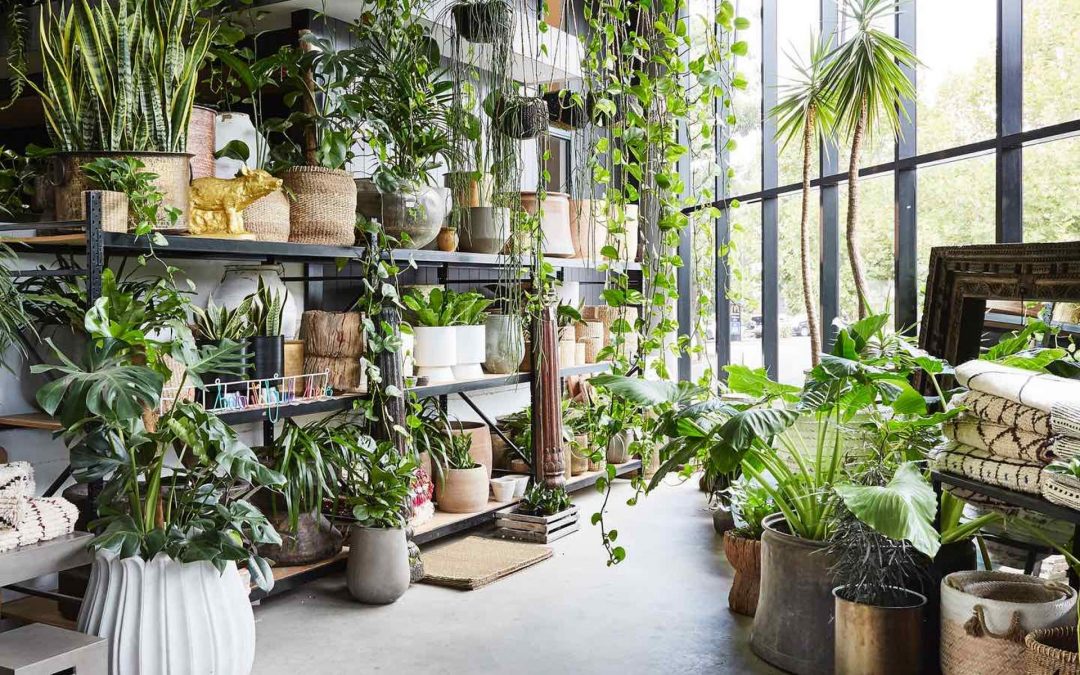Indoor gardening has been gaining popularity in recent years, as people become more aware of the many benefits it provides. From improving air quality and mental health to enabling year-round food production and promoting urban farming, indoor gardens hold the key to a more sustainable future. In this blog post, we will dive deep into the many advantages of indoor gardening and explore the reasons why it is a future-proof solution for individuals and communities alike.
Contents
Air Quality Improvement
One of the primary benefits of indoor gardening is its ability to improve air quality. Plants are natural air purifiers, as they absorb carbon dioxide and release oxygen through the process of photosynthesis. Additionally, they can filter out harmful pollutants such as volatile organic compounds (VOCs), which are common in modern households due to off-gassing from furniture, carpets, and cleaning products.
Having an indoor garden helps create a healthier living environment by reducing allergens, mold, and mildew, making it especially beneficial for people with allergies or respiratory issues. Some particularly effective air-purifying plants include the spider plant, snake plant, and peace lily. By strategically placing these plants throughout your living space, you can enjoy a fresher and cleaner atmosphere that ultimately contributes to better overall health and well-being.
Mental Health and Well-being
Indoor gardens have a positive impact on mental health and well-being. Studies have shown that interacting with plants can help reduce stress, anxiety, and depression. The act of caring for plants can foster a sense of accomplishment and provide a therapeutic outlet. The presence of greenery also creates a calming atmosphere, which is conducive to relaxation and meditation.
Moreover, indoor gardens can help improve concentration and productivity, making them an excellent addition to home offices or study spaces. Biophilic design principles, which emphasize the integration of nature into built environments, suggest that incorporating plants into interior spaces can lead to increased creativity and problem-solving abilities. By surrounding yourself with living plants, you can cultivate a nurturing environment that promotes mental and emotional well-being.
Year-round Food Production
Growing your own food has numerous benefits, such as reducing your carbon footprint, cutting grocery bills, and ensuring access to fresh, nutritious produce. With an indoor garden, you can grow fruits, vegetables, and herbs year-round, regardless of the climate or season. This is particularly advantageous in urban environments, where access to fresh produce may be limited, or in areas with harsh weather conditions that make outdoor gardening challenging.
Indoor gardening also allows for better control over the growing conditions, such as temperature, humidity, and light, ensuring optimal growth and yield. By using grow lights, hydroponic systems, and temperature control devices, you can create the perfect microclimate for your plants. This level of control enables you to grow a wide variety of crops, from leafy greens and herbs to tomatoes and peppers, providing you with fresh, homegrown produce throughout the year.
Space Optimization and Vertical Gardening
As urban populations continue to grow, space is becoming an increasingly valuable commodity. Indoor gardening offers a solution to this problem by allowing for the efficient use of available space through vertical gardening techniques. By growing plants on walls, shelves, or specialized vertical planters, you can maximize the use of vertical space while creating a visually appealing and functional garden. This is especially beneficial for city dwellers who lack outdoor space but still want to enjoy the benefits of gardening.
Vertical gardening systems, such as living walls and modular planters, can transform even the smallest spaces into lush, green havens. In addition to their aesthetic appeal, vertical gardens can provide insulation, reduce noise pollution, and improve air quality. By optimizing space with vertical gardens, you can enjoy the many advantages of indoor gardening regardless of the size of your living area.
Water Conservation
Indoor gardening typically uses less water than traditional outdoor gardens, as the controlled environment reduces evaporation and runoff. In addition, many indoor gardening systems, such as hydroponics or aquaponics, recycle water, further reducing water consumption. This is an important consideration in areas prone to drought or with limited water resources.
By using less water, indoor gardens contribute to a more sustainable future. Modern systems like aeroponics and drip irrigation can help optimize water usage, ensuring that plants receive the right amount of water without waste. By embracing water-saving techniques and technology, indoor gardeners can play a role in global water conservation efforts while still enjoying the benefits of growing their own plants.
Pest and Disease Control
Indoor gardens are generally less susceptible to pests and diseases, as they are protected from the elements and can be more easily monitored and controlled. This means that fewer pesticides and chemicals are needed, resulting in healthier, more natural produce. In addition, indoor gardens can be isolated from invasive species and pathogens, protecting local ecosystems and biodiversity.
By carefully monitoring your indoor garden and using natural pest control methods, such as introducing beneficial insects or using organic remedies, you can maintain a healthy and thriving garden without resorting to harsh chemicals. This not only results in safer, cleaner produce but also contributes to a healthier living environment for you and your family.
Educational Opportunities
Indoor gardens provide a unique opportunity to learn about plant biology, ecology, and sustainable agriculture. They can serve as living classrooms for children and adults alike, fostering a deeper understanding of the natural world and our role in preserving it. By cultivating an indoor garden, individuals can gain practical experience in growing and maintaining plants, as well as learn about various cultivation techniques such as hydroponics, aeroponics, and aquaponics.
This hands-on learning experience can inspire a lifelong appreciation for nature and a sense of stewardship for the environment. Schools, community centers, and other institutions can integrate indoor gardens into their educational programs, providing an engaging and interactive way for students to learn about biology, ecology, and sustainability.
Food Security and Urban Farming
With an increasing global population and the subsequent pressure on agricultural resources, indoor gardens and urban farming play a critical role in promoting food security. By growing food in urban environments, we can reduce the reliance on long-distance transportation and decrease the overall carbon footprint of food production. Additionally, indoor gardens can help address food deserts, which are areas with limited access to fresh produce.
By encouraging the development of urban farms and community gardens, we can work towards a more sustainable and resilient food system. Rooftop gardens, vertical farms, and indoor greenhouses are just a few examples of innovative urban farming solutions that can help provide fresh, local produce to urban residents. By fostering a culture of urban agriculture, we can create stronger, healthier communities that are better equipped to face the challenges of a growing population and a changing climate.
Climate Change Adaptation
As climate change continues to impact weather patterns and growing conditions worldwide, indoor gardening offers a way to adapt to these changes. By growing plants in controlled environments, we can mitigate the effects of extreme weather events, such as droughts, floods, and heatwaves, ensuring a stable food supply. Indoor gardens also allow for the cultivation of a more diverse range of crops, including those that may not be suited to outdoor conditions. This increased crop diversity can help build resilience to climate-related threats and contribute to overall food security.
Indoor gardens can also play a role in reducing the urban heat island effect, which occurs when cities become significantly warmer than their surrounding rural areas due to human activities and infrastructure. Plants have a natural cooling effect, as they release moisture through a process called transpiration. By incorporating indoor gardens and green spaces into urban environments, we can help mitigate the urban heat island effect and create more comfortable living conditions for city dwellers.
Aesthetics and Biophilic Design
Indoor gardens not only provide practical benefits but also contribute to creating beautiful, inspiring spaces. Integrating plants into interior design – a concept known as biophilic design – has been shown to improve mental well-being and boost creativity. By incorporating indoor gardens into living spaces, offices, and public buildings, we can create more inviting and nurturing environments that foster a deeper connection with nature.
Biophilic design principles emphasize the use of natural materials, colors, and textures, as well as the inclusion of plants, water features, and natural light. By integrating these elements into our living and working spaces, we can create environments that promote well-being, productivity, and inspiration. Indoor gardens, living walls, and other plant-based design features can transform ordinary spaces into extraordinary, life-enhancing environments that bring the beauty and benefits of nature indoors.
Conclusion
Indoor gardening offers a myriad of benefits, ranging from improved air quality and mental well-being to increased food security and climate change adaptation. By embracing this future-proof solution, we can cultivate a more sustainable, resilient, and healthy world for ourselves and future generations. With advances in technology and a growing appreciation for the value of nature, indoor gardens have the potential to revolutionize the way we live, work, and interact with our environment. So, whether you have a small apartment in the city or a spacious home in the suburbs, consider joining the indoor gardening movement and experience the many rewards it has to offer.

